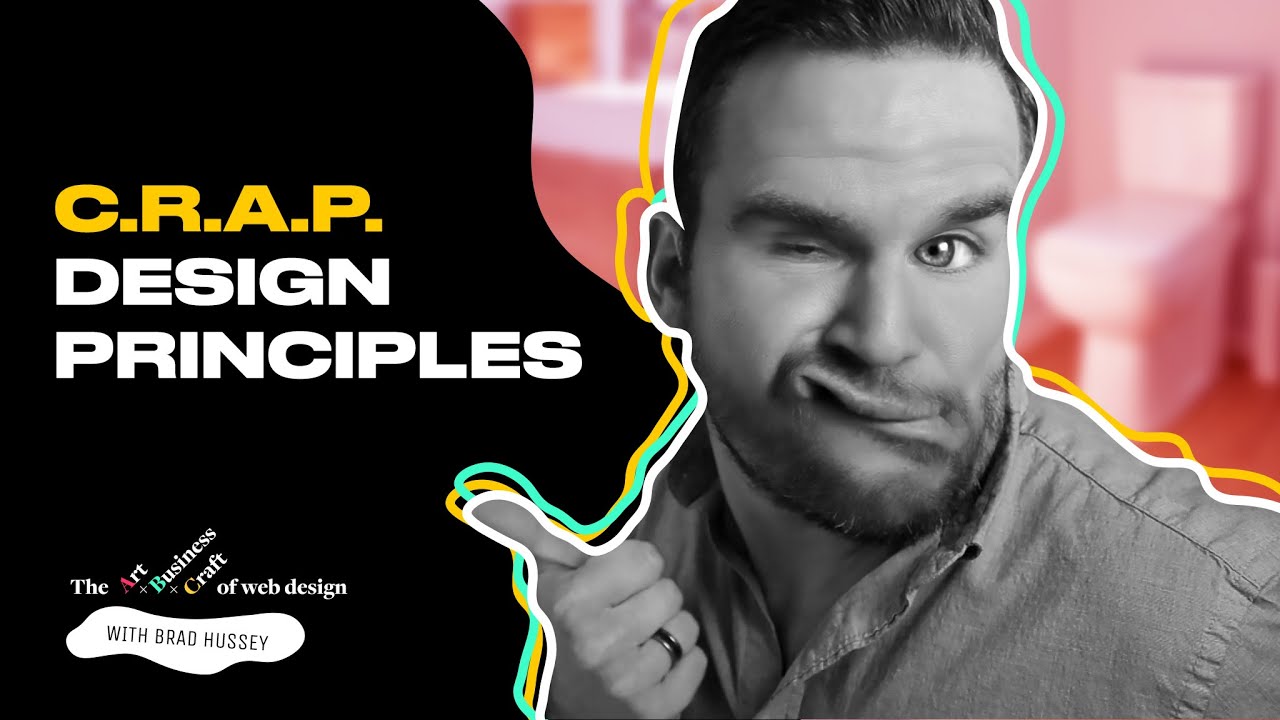3 Psychology Principles Every Web Designer Must know | Free Web Design Course | Episode 18
Summary
TLDRThis video explains three key psychology principles that every web designer should understand to create effective and engaging websites. It covers mirroring, which influences mood through imagery; social validation, which builds trust by showcasing user testimonials and social proof; and the psychology of color, which affects emotions and perceptions. The video also recommends resources, like the Cognitive Bias Codex and Daniel Kahneman's book 'Thinking, Fast and Slow,' for designers who want to explore more about cognitive biases and how they impact decision-making. Overall, understanding these principles helps designers create more persuasive and user-centered designs.
Takeaways
- 😀 Understanding human psychology is essential for effective web design, as it helps designers create experiences that resonate with users.
- 🧠 Designers can influence users’ emotions and actions through visuals and layouts, often using psychological principles to guide decisions.
- 😊 Mirroring is a psychological principle where people subconsciously mimic the emotions of those they see, making it crucial to use images that convey the desired mood.
- 👥 Social validation is a powerful motivator, as people tend to trust actions or products that are endorsed by others, which is why testimonials and social proof are commonly used in web design.
- 🌈 Color psychology plays a significant role in web design, as colors can evoke specific emotional responses, such as red for excitement or green for calmness.
- 📊 Including visual cues like logos, testimonials, and user counts can help quickly build trust and credibility by leveraging the principle of social proof.
- 📚 Designers should explore various cognitive biases, as they provide insights into how people process information and make decisions.
- 🔍 The Cognitive Bias Codex is a resource that categorizes over 180 biases, useful for designers to understand how shortcuts in thinking affect decision-making.
- 📖 'Thinking, Fast and Slow' by Daniel Kahneman is recommended reading for those interested in learning more about cognitive biases and how they impact decisions.
- 👍 Familiarizing with psychology principles not only improves design but also enhances interpersonal skills and empathy towards users.
Q & A
What is the significance of understanding psychology in web design?
-Understanding psychology in web design is crucial because designers aim to influence users’ behaviors and decisions. By knowing how people think and react, designers can create websites that guide users toward desired actions, such as making a purchase or engaging with content.
What is the principle of 'mirroring' in web design, and how does it affect users?
-Mirroring refers to the brain's tendency to mimic the emotions or actions of others. In web design, this principle is used through imagery, where people in images convey emotions like happiness or excitement, causing users to subconsciously feel and reflect those emotions, which can positively influence their interaction with the site.
How does social validation influence web design?
-Social validation leverages the psychological tendency to follow the behavior of others when making decisions. In web design, this is used through testimonials, user reviews, and showing the number of customers to give users confidence that others have successfully used a product or service, encouraging them to do the same.
Why are colors so important in web design, according to the video?
-Colors have both psychological and physiological effects on users. For instance, red can increase heart rate and excitement, while green can promote relaxation. By understanding how colors affect emotions, designers can choose color schemes that align with the desired emotional response on a website.
How does the principle of 'social proof' work in influencing user decisions?
-Social proof works by showing users that others have already engaged with a product or service successfully. This reduces the mental effort needed to evaluate whether something is good, as users rely on others' experiences to make quick decisions, which builds trust in the website.
What are 'cognitive biases,' and how are they relevant to web design?
-Cognitive biases are mental shortcuts the brain uses to make decisions more quickly. In web design, understanding these biases allows designers to create interfaces and content that align with users’ natural decision-making processes, making websites more intuitive and effective.
What role do testimonials and logos of famous companies play in web design?
-Testimonials and logos of famous companies serve as social proof in web design, showing potential customers that others have successfully used the product or service. This builds credibility and trust, making it easier for users to decide to engage with the website.
Why is it essential to understand the emotional impact of colors in web design?
-Understanding the emotional impact of colors is essential because colors can evoke specific emotions and behaviors. Designers can use this knowledge to create a mood or atmosphere that supports the goals of the website, such as creating excitement, calm, or trust in the user.
What is a recommended resource for learning about the psychological effects of colors?
-The video recommends the website 'Empower Yourself with Color Psychology' for understanding the psychological effects of various colors. Although the website may not be visually appealing, it provides comprehensive information on how different colors affect emotions and behavior.
What is a suggested book for understanding cognitive biases and decision-making?
-The video suggests the book 'Thinking, Fast and Slow' by Daniel Kahneman, a Nobel Prize winner. The book explores how people think and make decisions, covering various cognitive biases and providing insights that are beneficial for web designers who want to understand how users make choices.
Outlines

このセクションは有料ユーザー限定です。 アクセスするには、アップグレードをお願いします。
今すぐアップグレードMindmap

このセクションは有料ユーザー限定です。 アクセスするには、アップグレードをお願いします。
今すぐアップグレードKeywords

このセクションは有料ユーザー限定です。 アクセスするには、アップグレードをお願いします。
今すぐアップグレードHighlights

このセクションは有料ユーザー限定です。 アクセスするには、アップグレードをお願いします。
今すぐアップグレードTranscripts

このセクションは有料ユーザー限定です。 アクセスするには、アップグレードをお願いします。
今すぐアップグレード関連動画をさらに表示

The 7 laws of good Web Design

15 rules to adjust typography like a pro (Web Design tutorial)

Crafting Remarkable Logos: 7 Logo Design Principles!

C.R.A.P. DESIGN PRINCIPLES | Free Web Design Tutorial 2021 | Lesson 1

5 Lighting Concepts Every Cinematographer Needs To Know

PRINSIP DASAR DESAIN DAN KOMUNIKASI YANG WAJIB KALIAN KETAHUI
5.0 / 5 (0 votes)
